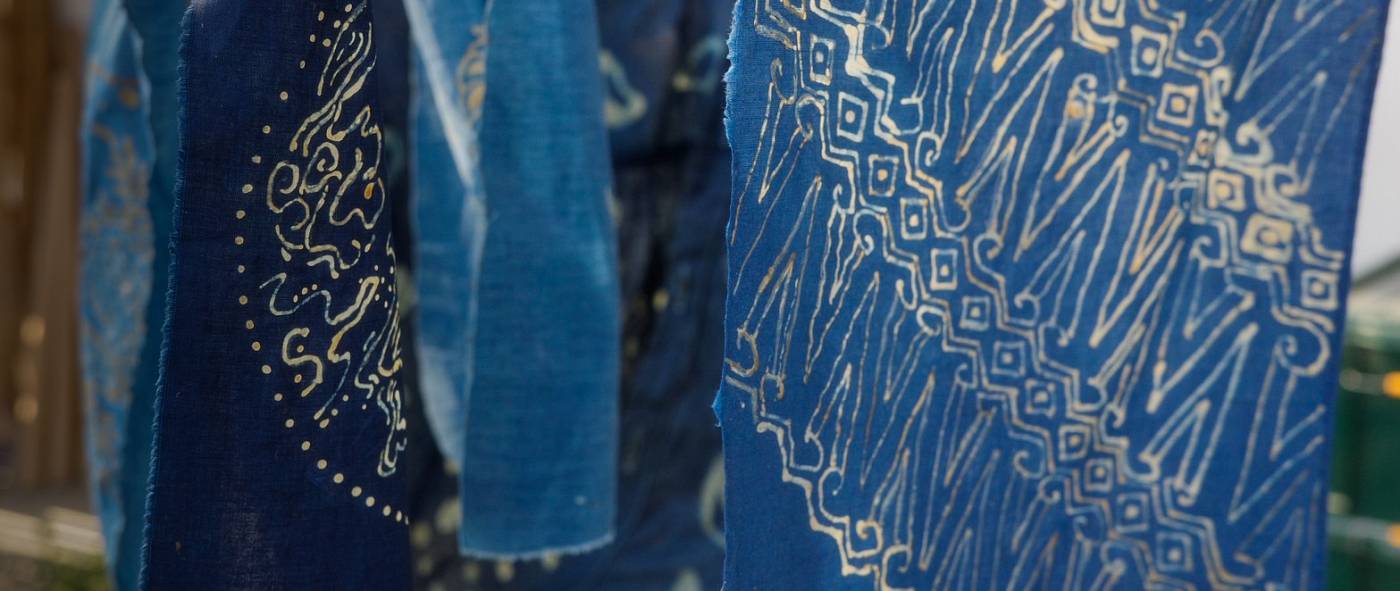
Fibers Unleashed: Finding Textiles in Unexpected Places
Sometimes, treasures are found in the most surprising places. In this blog post, Riley Kleve writes about traveling through Sweden, and the unexpected textiles and tools they found along the way.
Hej hej! I’m writing from a train in Norway, a couple of weeks into my Scandinavia trip. I feel like I’ve learned enough to write several incredibly long blog posts, but for now I’ll keep it short and sweet with some gorgeous textiles I’ve seen in places and situations I wouldn’t have expected.
While planning my trip, I heard from more than a couple of ADP alums about a cool ribbon shop in Stockholm that I absolutely needed to visit, but no one could remember the name, and my online search (“best ribbon store, Stockholm”) didn’t yield any helpful results. Luckily, it was on a main street and easy to stumble across. The owners don’t allow photography of the merchandise, but they generously allowed me to snap a photo of the shop’s door, covered in handmade tassels. Later that afternoon, our group met up with Kerstin Neumüller and Molly Sjöstam for a bit of chip carving and band weaving in Julia Kalthoff’s axe shop.
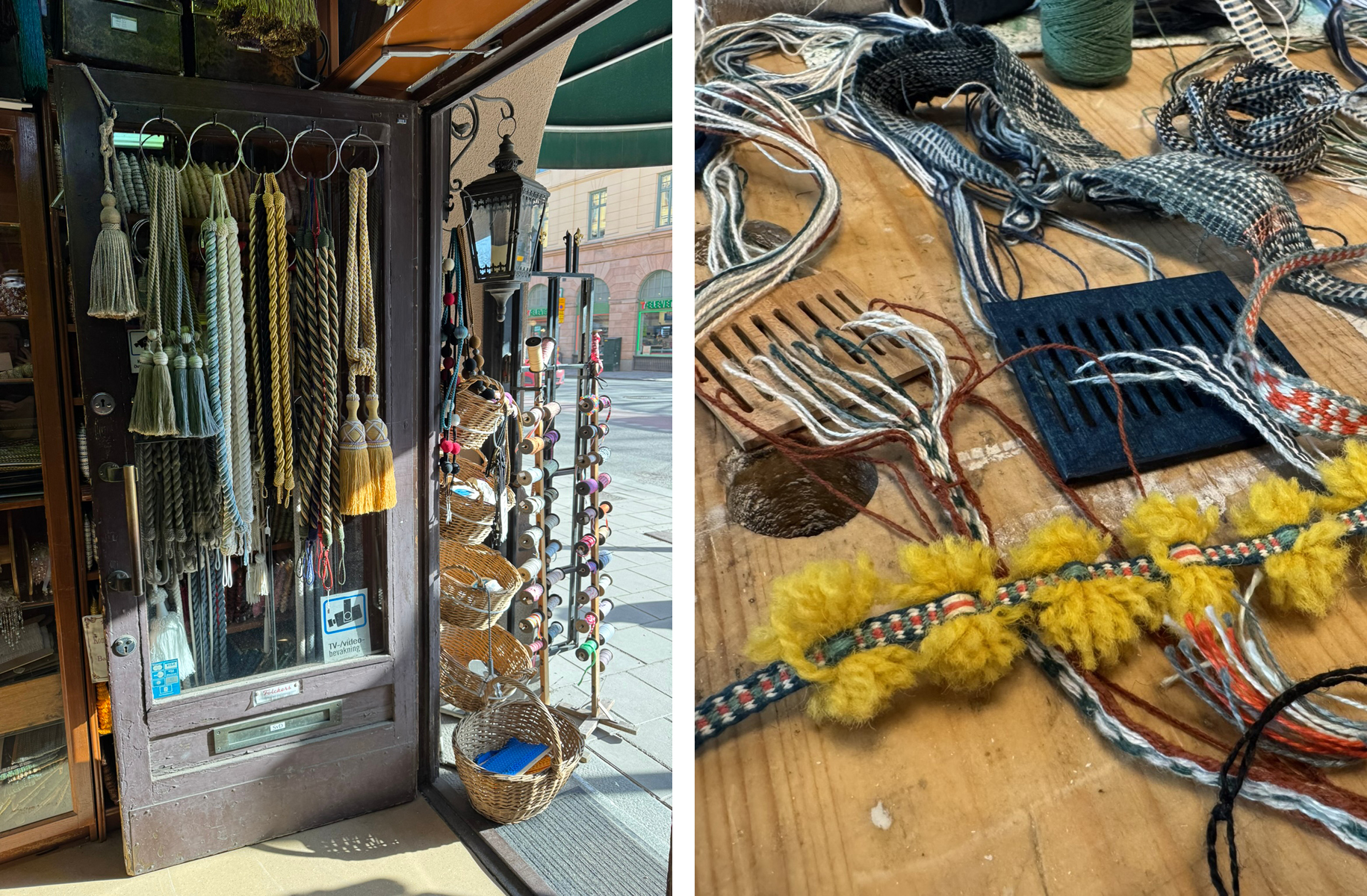 Left: Front door of the ribbon shop in Stockholm. Right: Band weaving.
Left: Front door of the ribbon shop in Stockholm. Right: Band weaving.
I started the next day out at the Vasa Museum, planning to make a quick visit before hitting other museums with larger collections of textiles for the rest of my day. The Vasa sank in 1628 in Stockholm harbor and was recovered from the water in 1961. I was pleasantly surprised by a display case showing the contents of a box that had remained sealed on the sunken ship for over 300 years. Its contents included a ball of silk thread and other mending supplies that would have been important to a sailor with fairly minimal belongings onboard.
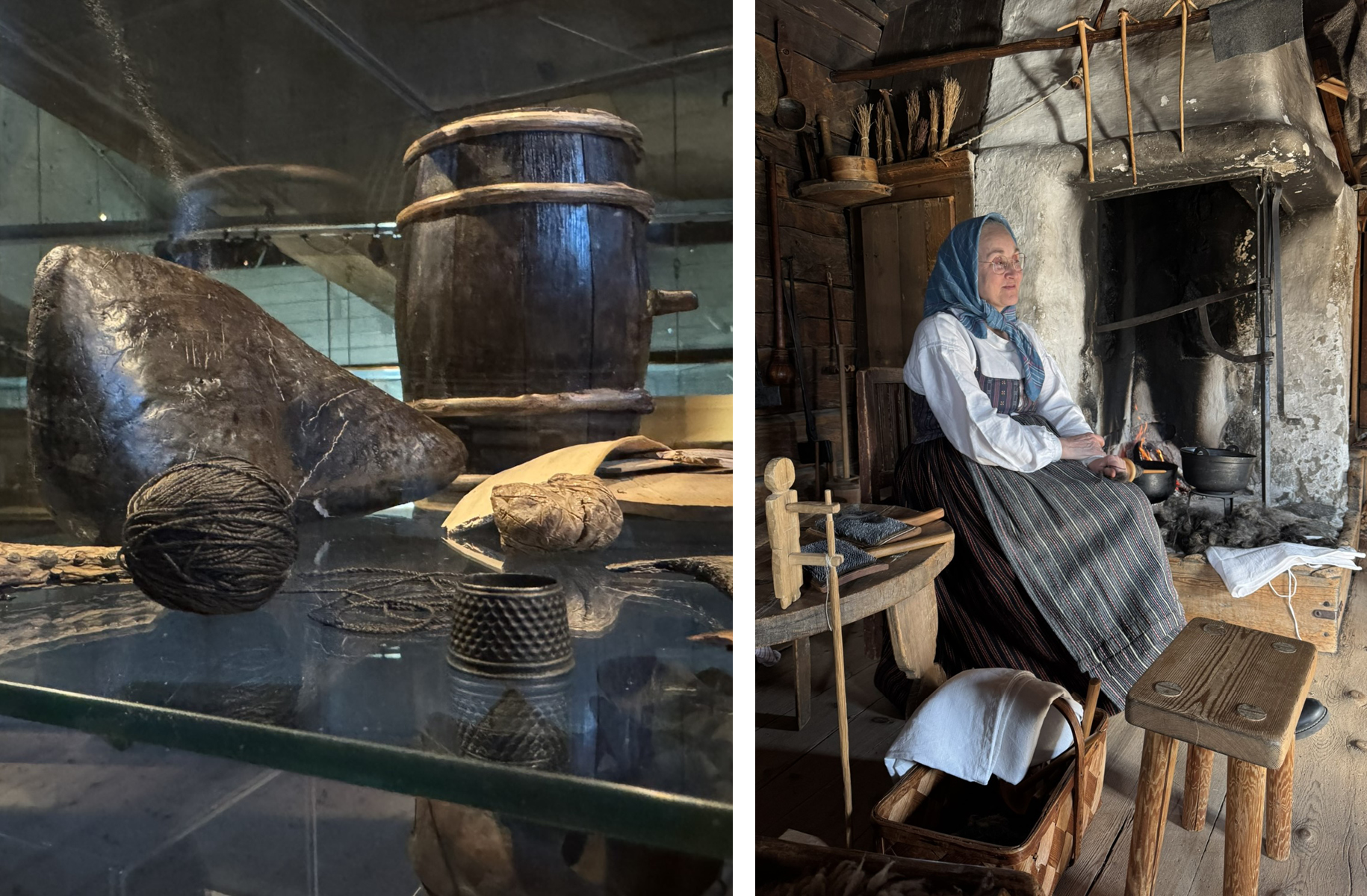 Left: Textiles that had been aboard the Vasa wreck for over 300 years. Right: A handspinning demonstration at Skansen.
Left: Textiles that had been aboard the Vasa wreck for over 300 years. Right: A handspinning demonstration at Skansen.
Later, I made my way to Skansen, Stockholm’s 75-acre open-air museum of historical buildings from all over the country. During the busy summer months, the buildings are all open and full of staff demonstrating crafts, but I was told that things would be fairly sparse during a March visit. I was surprised to find a handspinner demonstrating inside a farmhouse from Northern Sweden. I stopped to chat (and later to pose with some sheep). It was definitely a worthwhile visit!
The sheep at Skansen
The next week, our group headed north to visit friends at Sätergläntan, our sister school. We spent time touring campus, where it felt like nearly anything that could be handmade from textiles, wood, or metal was. I especially loved the handwoven fabric on the abundant throw pillows and the collection of weaving books in the school’s library. Students at Sätergläntan have an annual tradition of preparing coal from wood using traditional methods. The temperature must be closely monitored, so students take shifts sleeping in a wooden hut insulated with wool and moss. It was a neat find!
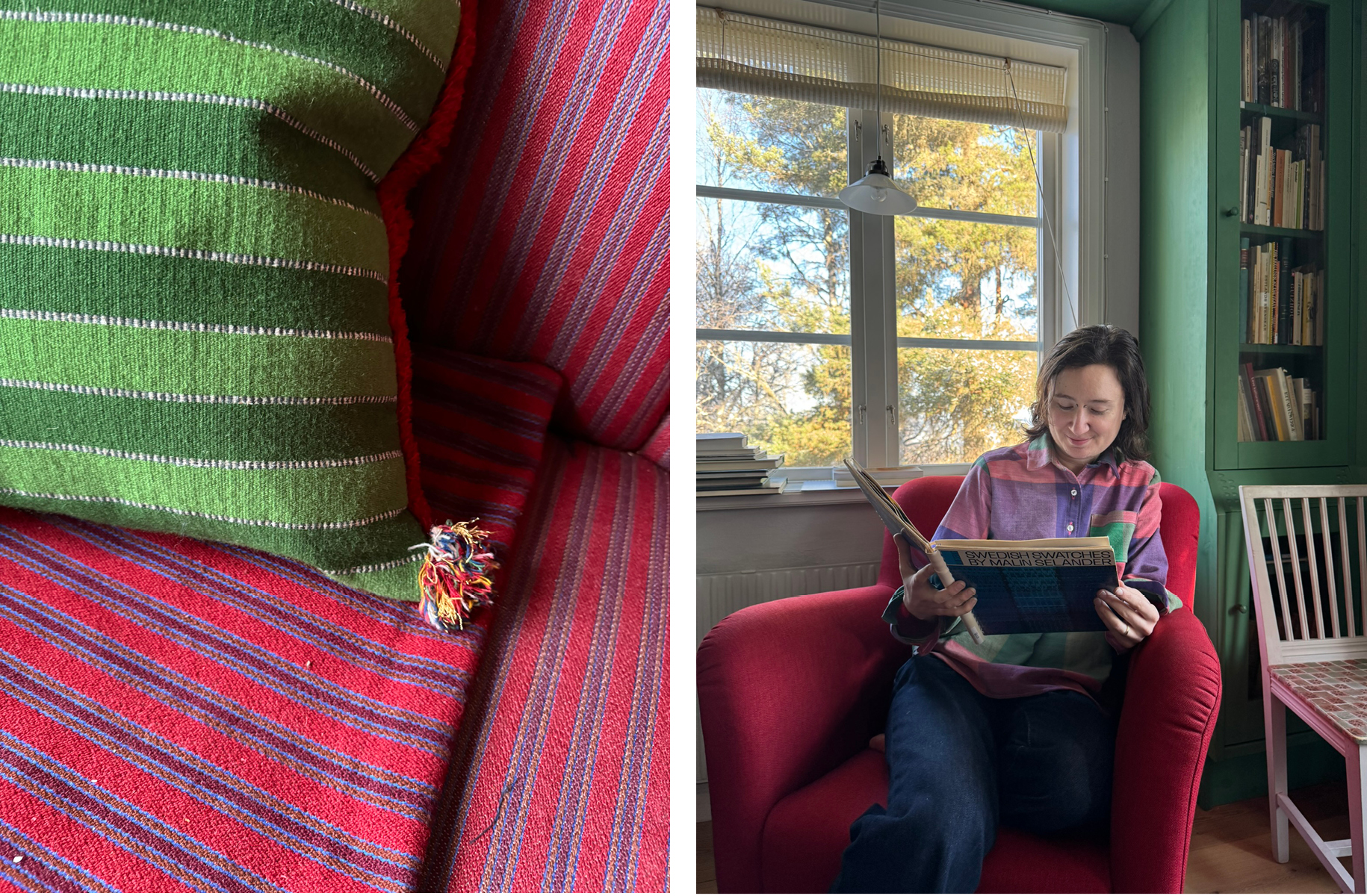 Left: Handwoven pillows at Sätergläntan. Right: Digging into the collection of weaving books at Sätergläntan.
Left: Handwoven pillows at Sätergläntan. Right: Digging into the collection of weaving books at Sätergläntan.
On a day trip around the lake, Cooper, Ty, and I stopped by a local outdoor museum expecting to look at some buildings for a few minutes before moving on. We were pleasantly surprised to bump into the museum’s caretaker, Eva Olander, while she was heating up her lunch in the kitchen. She showed us around the Orsa Museum, including a huge weaving room, or vävstuga, in the basement of the main building.
The vävstuga in the basement of the Orsa Museum
I also got to see some antique textile tools, including a spinning wheel, band loom, and a lazy Kate from 1840!
Antique tools in the Orsa Museum
During our last day in Dalarna, I spent the morning visiting textile artist Kirsi Manni, who had been described to me as a lover of antique textiles and tools. This might have been the understatement of the century! Inside her studio (right next door to the “new” church in town—built in 1875) she has a collection of dozens of spinning wheels, distaffs, and other tools, all from the region.
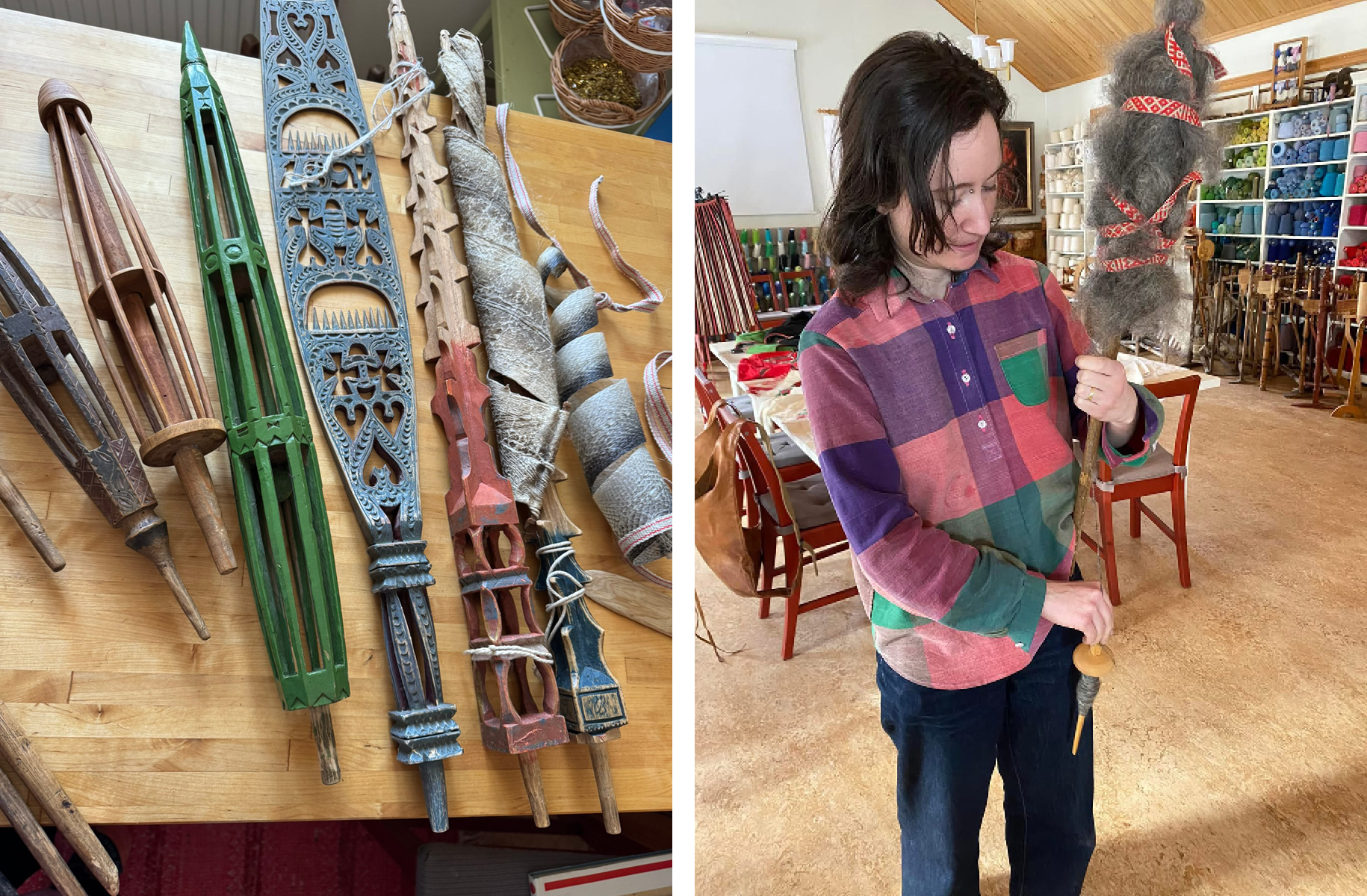 Some of Kirsi Manni's antique textile tools
Some of Kirsi Manni's antique textile tools
Even more impressive was her assortment of treadled band looms, a style unique to the nearby town of Leksand. By the end of the afternoon, I was leaving with an unexpected piece of equipment: one of the Leksand style looms, one of only a few she’s helped “emigrate” across the Atlantic. I’m looking forward to using it once I get it reassembled in Grand Marais!